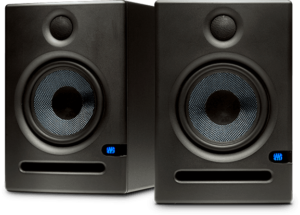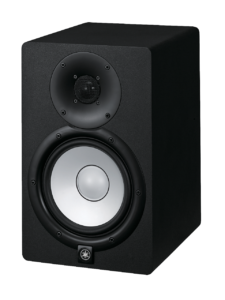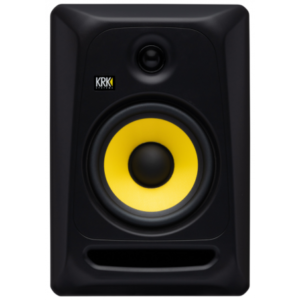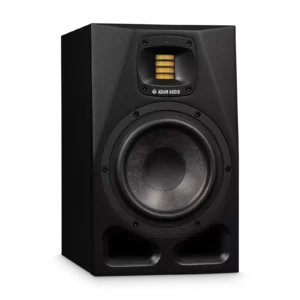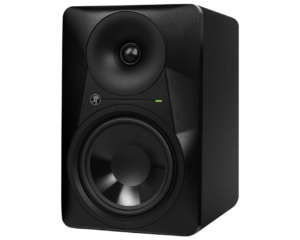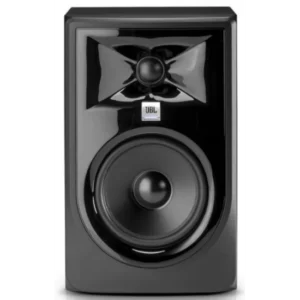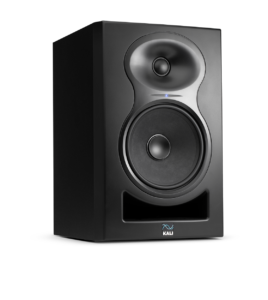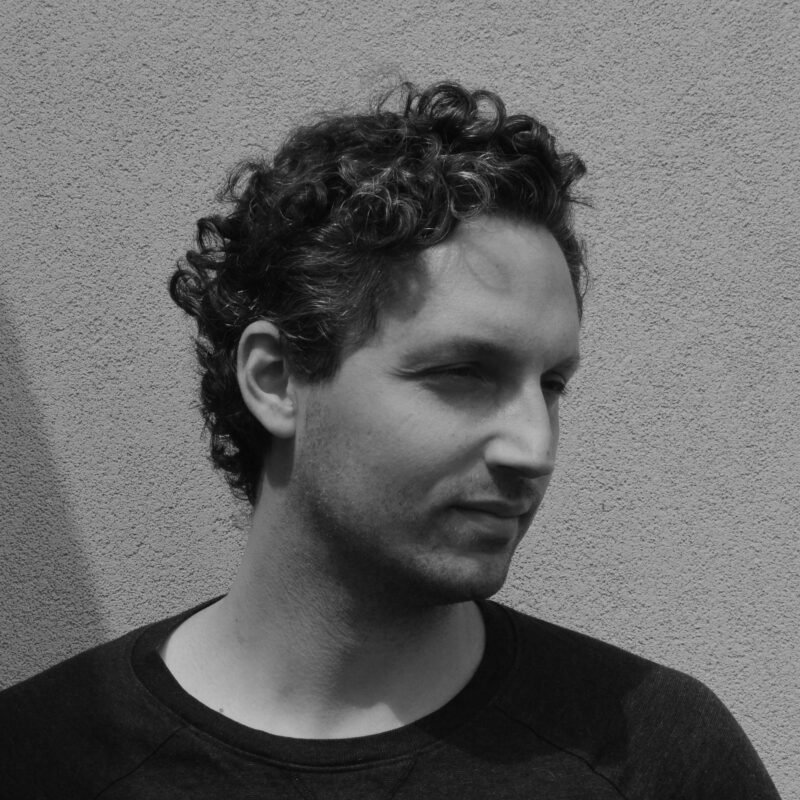Whether you’re a beginner or an award-winning music producer, having good-quality studio monitors is crucial if you want to enhance the quality of your music production. In particular, when it comes to hip-hop and rap music, you’ll need monitors that can perfectly reproduce the smooth transitions, deep bass, and engaging beat of your tracks.
When working on a new piece, you want your sound to be immersive and galvanizing whether people listen to it in their car’s sound system, AirPods, or professional hi-fi equipment. This is why professional studio monitors should give you the sonic clarity you need to make accurate decisions when mixing and mastering your tracks.
Today we’ll take a look at some of the best studio monitors for hip-hop and rap music production, focusing on those that ensure transparent reproduction, detailed stereo imaging, and accuracy across the entire spectrum.
TLDR👇 Best studio monitors for hip hop production
- Presonus Eris E5
- Yamaha HS7
- KRK Classic 5
- Adam Audio T7V
- Mackie MR624
- JBL 305P MKII
- Kali Audio LP-6 V2
For information on what qualities you should look for when buying studio monitors, skip to the end of this article.
Best studio monitors for hip hop production – Detailed
1. Presonus Eris E5
Specs
- Size: 5″
- Output power: 80W (per unit)
- Frequency response: 53Hz-22 kHz
I won’t hide that I’m a big fan of the Presonus studio monitors: they deliver excellent sound quality without breaking the bank, they’re built to last and allows extensive acoustic tuning to optimize the output depending on the characteristics of your studio space.
The Eris E5 is a two-way nearfield monitor that features a 5.25” woofer and a 1” silk-dome tweeter, which together bring to life a balanced soundstage ideal for mixing and mastering in small and medium-sized rooms.
80 Watts is enough to work on your tracks without worrying about transients or peaks, and the high and midrange controls at the back can help you fine-tune your sound depending on your style and room configuration.
Why you should buy it: if you’re on a budget but still want to create balanced and accurate mixes, a pair of Presonus Eris E5 is one of the best options out there and can take your style to the next level.
2. Yamaha HS7
Specs
- Size: 6.5″
- Output power: 95W (per unit)
- Frequency response: 43Hz-30kHz
The Yamaha HS series has been around since the early 2000s, and it’s beloved by many audio engineers for its sonic accuracy and detailed reproduction. What’s most impressive about the Yamaha HS7 is its built quality: designed to reduce vibrations and resonances to the minimum, the HS7 features a carefully-crafted mounting ring that reduces coloration, reproducing sound with stunning clarity.
With a frequency range of up to 30kHz, you’ll be able to analyze and adjust high frequencies professionally, with enough headroom and a smooth sound transparency that’ll make post-production simpler and more effective.
Making adjustments to the audio output couldn’t be easier: the HS7 ensures you’re in control of the soundstage thanks to room-control and high-trim response settings, which will help you blend your nearfield monitors with the environment.
Why you should buy it: the HS7 is the embodiment of Yamaha’s attention to detail and built quality. These monitors are built to last, extremely transparent, and fully customizable, so I’d recommend them to beginners and seasoned hip-hop producers alike.
3. KRK Classic 7
Specs
- Size: 7″
- Output power: 73W (per unit)
- Frequency response: 47.5Hz-34.5kHz
The iconic yellow woofer of the KRK has become legendary among music producers of all levels and for the right reasons! The KRK Classic 7 is an excellent solution for hip-hop and rap producers because it delivers a flat frequency response by default but also allows you to boost the lower frequencies by 2 dB to make your tracks more immersive and engaging in the studio.
The carefully-refined 7” woofer and 1” tweeter deliver a powerful and transparent performance, with 73W power that’ll give you more than enough power to hear every nuance in your track. Another great feature is the built-in auto limiter, which prevents sudden peaks from harming the speakers and presents a balanced sound for mixing. Finally, the foam isolation pads further mitigate unwanted resonances and vibration, offering a solid and pristine soundstage.
Why you should buy it: you can’t go wrong with KRK monitors, and the KRK Classic 7 is a great option if you like to boost the bass and hear how your tracks will sound outside of the studio. Plus, the built-in auto limiter is a great option to prevent sudden peaks and damage to your equipment.
4. Adam Audio T7V
Specs
- Size: 7″
- Output power: 50W (per unit)
- Frequency response: 39Hz-25kHz
A couple of years ago, I went to a high-end recording studio in London where they were using the T7V as reference monitors. Not too bad for a pair of speakers you can get for less than $500! They might be slightly more expensive than other options in this list, but a pair of Adam Audio T7V offers incredible precision and an impressive frequency response that hip-hop producers will love.
The 7” polypropylene woofer offers a perfect combination of accuracy and power, bringing to life detailed bass frequencies that extend all the way down to 39Hz: which is outstanding if you consider the budget and size of this monitor.
Higher frequencies are represented just as faithfully thanks to Adam’s patented U-ART, or Unique Accelerated Ribbon Tweeter, with its pleated diaphragm designed to reach up to 25kHz. This results in a balanced, undistorted reproduction of transients and a highly accurate soundscape.
Why you should buy it: If your budget permits, look no further than the Adam Audio T7V. It’s a versatile, trustworthy, and easy-to-use studio monitor whose performance dwarfs most speakers within its price range.
5. Mackie MR624
Specs
- Size: 6.5″
- Output power: 65W (per unit)
- Frequency response: 45Hz-20kHz
The Mackie MR Series is a fantastic option for the hip-hop producer looking for a studio monitor that performs magnificently and looks great. Thanks to its built-in logarithmic waveguide system, the Mackie MR624 guarantees detailed imaging and accuracy across the entire spectrum. The sound coming out of this speaker is tight and balanced, thanks to its natural acoustic absorption properties and the wooden cabinet that magnifies its distinctive sound signature.
What I love the most about the Mackie MR624 is its sound customization options, which are crucial if you’re mixing your tracks in a room that hasn’t been acoustically treated. This studio monitor comes with acoustic space and high-frequency controls that allow you to fine-tune the audio output depending on your environment, giving you complete control over your unique sonic signature.
Why you should buy it: The MR624 is a great option for a producer on a budget. It delivers a pristine, fully-customizable sound that can help you craft the perfect mix.
6. JBL 305P MKII
Specs
- Size: 5″
- Output power: 82W (per unit)
- Frequency response: 43Hz-24kHz
JBL is renowned for producing audio gear that delivers outstanding performance and lasts a lifetime, and the 305P MKII is no exception. This nearfield studio monitor comes packed with cutting-edge technology that might impress even a seasoned music producer.
The JBL 305P MKII is incredibly user-friendly, with a wide sweet spot and endless customization options to compensate for the imperfect acoustic environment you might be producing in. The Image Control Waveguide technology ensures the imaging is broad and accurate, while the Slip Stream low-frequency port ensures you’ll hear detailed and transparent bass frequencies even at low volumes.
You can get a pair of JBL 305P MKII for roughly $300: an astounding price for monitors packed with high-quality controls and powerful enough to mix and master hip-hop music professionally.
Why you should buy it: For the price, the JBL 305P MKII is one of the best value-for-money monitors, thanks to cutting-edge technology and exceptional built quality.
7. Kali Audio LP-6 V2
Specs
- Size: 6.5″
- Output power: 80W (per unit)
- Frequency response: 39Hz-25kHz
The Kali Audio LP-6 V2 is a great option when pristine and detailed sound imaging is paramount, but there’s much more to appreciate about this outstanding nearfield monitor. First of all, the incredible low-end extension: going as low as 39Hz, the LP-6 V2 brings to life detailed low frequencies also thanks to its unique low-noise port tube, which ensures the bass is transparent, smooth, and wide.
The 1” soft-dome tweeter reproduces crisp midrange and high-frequencies, and together with the 6.5” woofer, the sound texture feels immersive and accurate. If that wasn’t enough, the ample headroom and Boundary EQ controls will allow you to customize your sound and find the sweet spot that’ll unlock your creativity.
Why you should buy it: Impressive sound imaging, punchy bass, and flat-frequency response, all in a budget-friendly studio monitor that’ll last a lifetime.
How to choose studio monitors for hip-hop production
Frequency Response
Needless to say, lower frequencies in hip-hop music are crucial. They’re the backbone of your beat, and a powerful, addictive bassline is often all it takes to transform your homemade track into a hit.
Creating a galvanizing beat requires studio monitors that can reproduce lower frequencies precisely without exaggerating or distorting them, giving you an accurate frequency spectrum that you can adjust to achieve the perfect sound.
Detailed sound imaging requires a large speaker driver: larger drivers provide a deeper and more defined low-end response. If your studio monitors are too small to reproduce detailed bass frequencies, you’ll need to add a subwoofer to your audio system.
Personally, even if you’re a beginner, I wouldn’t get a speaker with a driver smaller than 5″ unless you want to pair it with a sub.
Room Acoustics
The size and characteristics of your studio space will have a huge impact on how audio frequencies interact with it. If the room is small (30 square feet or less), you might experience a significant bass build-up: lower frequencies, bouncing off the walls, will increase in intensity and give you an inaccurate perception of the lower frequencies in your track. If your studio is tiny, consider buying a pair of Presonus Eris E3.5. They’re tiny but work magnificently in confined spaces.
The frequency response can be altered by the room’s resonance, so you’ll need to listen to your mixes carefully, adjust the EQ when possible, apply acoustic treatments like bass traps and acoustic panels, and find the sweet spot for your speakers and sub so they create a balanced soundscape.
Power
When it comes to studio monitors, more wattage is not just about being louder but also the ability to perfectly reproduce the dynamic range of your track, offering higher headroom and better sound definition, especially when dealing with sound peaks or subtle transients.
If you’re looking for accuracy and the right amount of headroom, I’d recommend choosing studio monitors that offer at least 50 watts of power in a 5″ driver. Any size lower than this, and you might not be able to hear transients properly or mitigate sudden peaks.
Budget
You can spend as little as $100 or thousands of dollars on studio monitors, so defining your budget beforehand is crucial if you want to make the most of your investment.
If you’re a beginner hip-hop producer, you can get a great pair of studio monitors for around $300. At this price range, you’ll find monitors with 3″ or 5″ woofers that should satisfy your creative needs for some time.
When the time to upgrade comes, you might want to replace the whole set or get a subwoofer to enhance bass accuracy. If you choose the latter, consider it’ll cost you another $200/300 to get a good-quality sub for your music production.
Final thoughts
So, where do we go from here?
If you’re serious about your career in hip hop, I’d recommend you define your budget first, then analyze the sonic characteristics of your room, and finally, choose the perfect studio monitors that meet your expectations in terms of size and accuracy.
I always recommend the Presonus Eris series as I believe these monitors deliver exceptional sound quality for the money. However, if you’re willing to invest more, go for the Adam Audio T7V: great detail and sound imaging, with lower frequencies that sound immersive and vibrant despite the monitor’s small size.
Ultimately, all the studio monitors mentioned in this article can provide accurate and detailed reproduction across the spectrum, so whichever one you choose, rest assured it’ll help you bring to life the best version of your hip-hop tracks.
Good luck!
FAQs
Do I need studio monitors for producing hip hop?
If you are just starting out in your hip hop production journey you might just be using basic computer speakers or headphones, and that's fine. But very quickly, as you become more comfortable with your chosen software and the process, you'll find that neutral sounding studio monitors are imperative. There's no way you'll be able to control your output if you have speakers or headphones that are not designed to provide you with a 'true' representation of your input.
What’s the difference between studio monitors and speakers?
Whereas regular speakers enhance certain frequencies (such as the low-end) to boost the output of a sound (such as the bass), studio monitors aim to provide an accurate representation of an original recording i.e. a flat frequency response. As a music producer this is important, as you want your speakers to playback the true sound of your production, so you can make changes to enhance its quality and ensure it sounds good on any speaker. If you’re using regular speakers when making beats, it’s time to upgrade to studio monitors to take control of your mixes.
What else do I need to produce hip hop?
There are three core components of a home studio: a DAW, studio monitors and a midi controller. There are many DAWs out there and you can create awesome sounding hip hop with any functioning software. However, the most popular DAWs for hip hop production include Ableton, Logic Pro X and FL Studio. Midi controllers can be really powerful for improving your production workflow, as long as they function properly with your chosen DAW. We have compiled many guides such as the best midi controllers for Ableton and the best midi controllers for Logic Pro X.
What studio monitors do the best hip hop producers use?
According to Equipboard, some of hip-hop's most renowned producers have been seen using: Timbaland: Yamaha HS80M, KRK V8, KRK Rokit 8 G2 Dr Dre: Yamaha NS-10M, Yamaha HS80M 9th Wonder: Yamaha HS5 Just Blaze: Yamaha NS-10M DJ Premier: KRK VXT8, Yamaha NS-10M Metro Boomin: Yamaha HS8, Yamaha NS-10M Kenny Beats: Adam Audio A77X, FOCAL Alpha 80
*As an Amazon Associate I earn from qualifying purchases.

